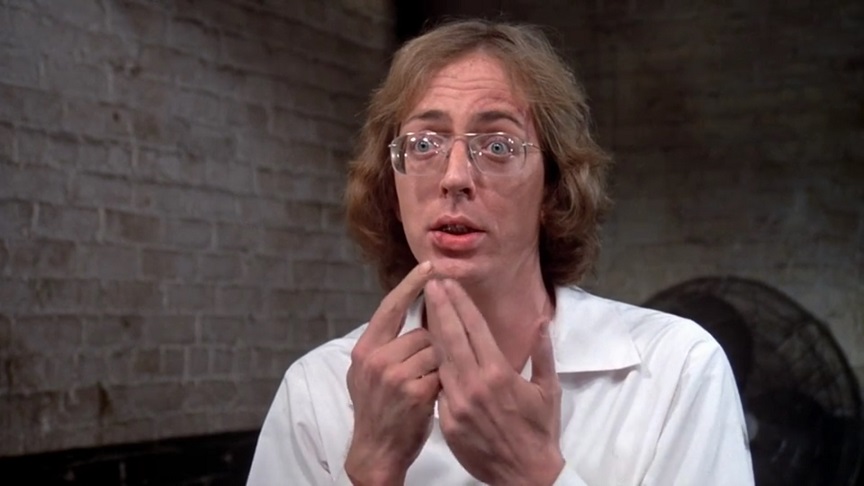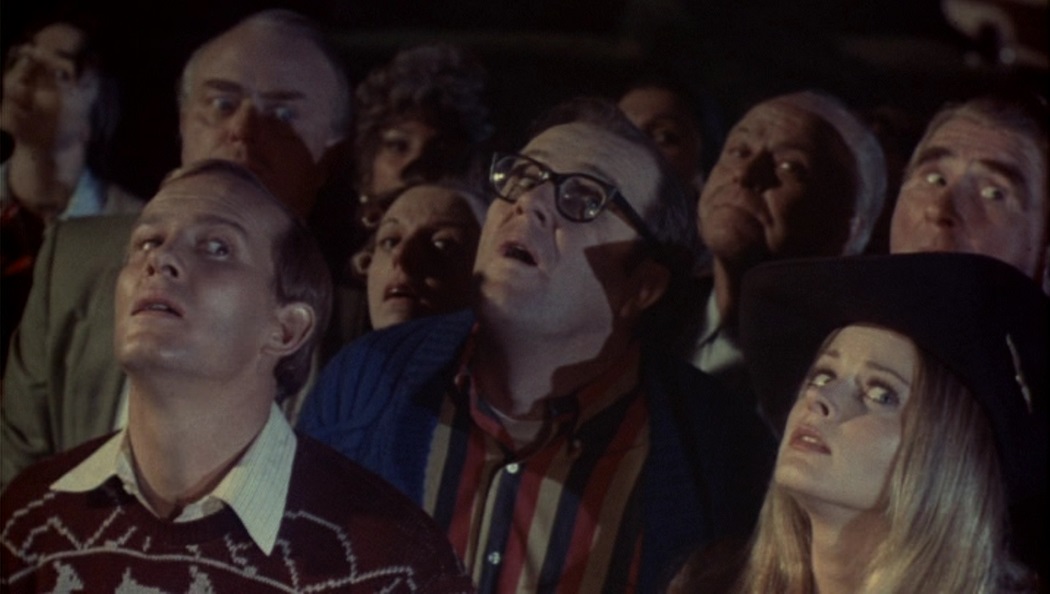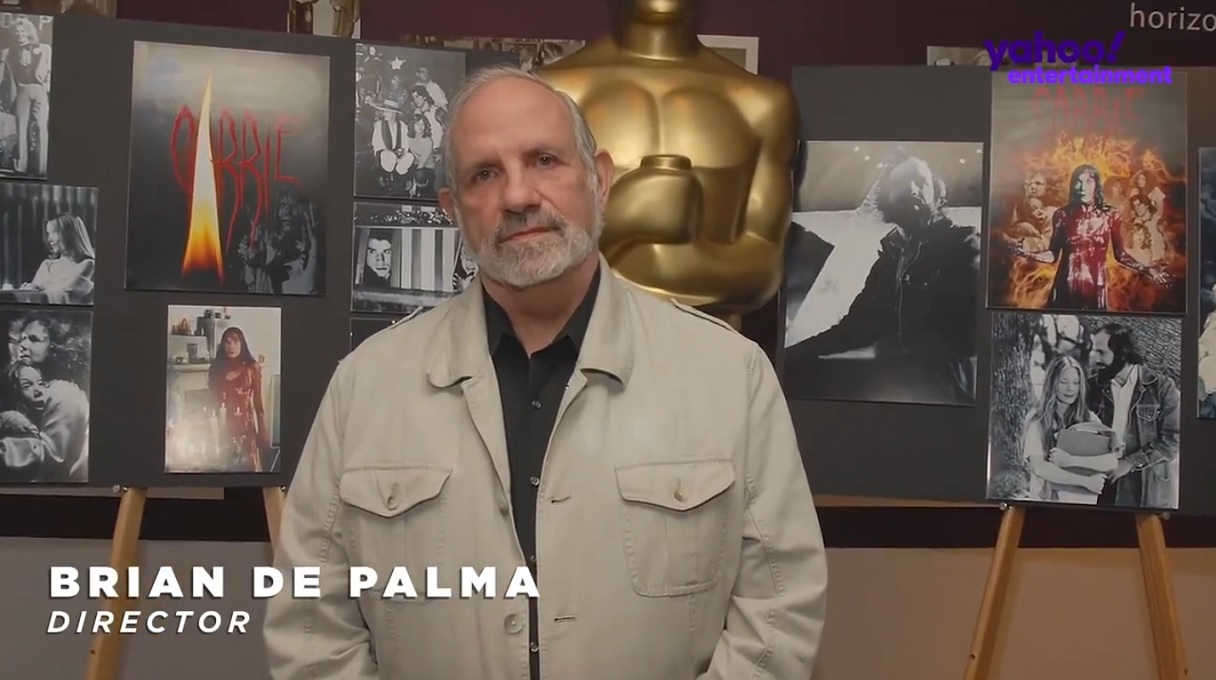ARE THE TWO BABYLON HITMEN ALSO ON THE BUS WITH TONY & MANNY?

Roger Durling, the executive director of the Santa Barbara International Film Festival, has taken to writing film "recommendations" as the Covid-19 pandemic began last year. A few days ago, he posted one for Brian De Palma's Scarface. "For your information," Durling states in the review about the two hitmen hired by Frank Lopez to assassinate Tony Montana, "the two assassins are shown to you earlier in the film, as they’re seated in front of Tony and Manny on the bus to Freedom Town. Nice poetic touch, since Tony himself is offered a green card to make a killing." I had never considered this before... is Durling correct? Here is Durling's review:
Dear Cinephiles,“Okay, here’s the Story. I come from the gutter. I know that. I got no education, but that’s okay. I know the street, and I’m making all the right connections. With the right woman, there’s no stopping. I could go right to the top.”
I can’t recall a film that has grown so much in stature as “Scarface” (1983). When it first opened it was received with mixed to negative reviews. SBIFF’s beloved friend Leonard Maltin wrote that it “”wallows in excess and unpleasantness for nearly three hours, and offers no new insights except that crime doesn’t pay.” It went on to become a box office hit, and to inspire other films, and it has had a lasting impact on hip hop artists. When the film was re-released in 2003, director Brian De Palma nixed Universal Studios’ attempt to replace the original soundtrack with a rap score.
I was in cinema heaven back in 1983, fresh out of high school and seeing it at the Ziegfeld movie palace on West 54th street. At the time, I was seriously puzzled by the critics’ reaction to the work. “My father took me to the movies,” says Tony to the Feds, explaining his knowledge of the English language. “I watch the guys like Humphrey Bogart, James Cagney, I learn how to speak from those guys. I like those guys.” I believe the original detractors were turned off by the fact that Tony is ruthless, unscrupulous and fearless. He doesn’t change. It’s an unrepentantly decadent and amoral world we navigate for the entire running time. There are no redeeming qualities in this thoroughly unattractive protagonist. He’s laser focused on his greed and ambition, and that’s why we root for him. It’s a bitter take on the American dream.
There is one scene that caused walkouts even before it was finished: the notorious chainsaw sequence leads you to believe that you’re seeing graphic details of dismemberment. De Palma has the camera drift past the action unto the street and then return. Things transpire out of sight, but the built up tension is there, and I can imagine it proves unbearable for some to imagine what actually happened. Throughout the film there’s a sense of inevitability in the journey of Tony. The house of cards that he’s built (in this case it’s a gaudy, opulent mansion of gilded marble stairs and questionable taste which by the way was shot in Santa Barbara at El Fueridis) will ultimately fall down. It’s gravity.
It’s vulgar, excessive, decadent entertainment. There are some extraordinary set pieces besides the aforementioned botched drug deal. The shootout at the Babylon Club and the altercations that precede it are tremendous. The location is bathed in pink neon lighting, and repetitive mirrors line up the walls recalling Orson Welles’ “Lady from Shanghai.” Two henchmen wait to pounce on a strung-out on cocaine Tony. A creepy comic with a grotesque mask – “the one and only Artemio” – dances with the crowd, and the machine guns explode. (For your information, the two assassins are shown to you earlier in the film, as they’re seated in front of Tony and Manny on the bus to Freedom Town. Nice poetic touch, since Tony himself is offered a green card to make a killing. )
The music by composer Giorgio Moroder, who has won three Academy Awards including one for scoring “Midnight Express” (1978), captures with its electronic sound Tony’s cold and unrelenting drive at 156 beats per minute. It’s one of the most memorable. The song “Push it to the Limit,” which is used to demonstrate Tony’s rise in wealth and position after he kills Frank Lopez (a fantastically sleazy Robert Loggia) and takes over as the head cocaine traffic in Miami, has been used to score dark horse characters in “South Park” and “It’s Always Sunny in Philadelphia” amongst many other instances.
This is still my favorite De Palma work with his signature slow sweeping, panning and tracking shots, through precisely-choreographed long takes lasting for minutes without cutting. Study the infamous scene in the bathroom. It’s delicious. He knows how to tease. The finale that threatens to derail into kitsch is perfectly over-the-top recalling Macbeth as the forest of assassins moves in on him. In this testosterone-filled environment, the two women in Tony’s world make an indelible impression. A very young Michelle Pfeiffer – rail thin and eyes like a shark – is his trophy wife, and she’s heartless and a perfect object of desire for him. As Tony’s incestual obsession, Mary Elizabeth Mastrantonio is heartbreaking as the innocent sister who goes to the dark side. And what can I say about Al Pacino as Tony that hasn’t already been said? It’s a master class in total commitment, the accent, the swaggart, the physicality, they are absorbing. It’s on the verge of the precipice but never becomes a caricature. It’s miles apart from his quiet work as Corleone.
Tony Montana : “You wanna f*%k with me? Okay. You wanna play rough? Okay. Say hello to my little friend!”
Love, Roger


























